Submitted by WA Contents
This upside down massive metal pavilion is made of recycled steel parts from an old ship by Shinslab
Korea, South Architecture News - Sep 27, 2016 - 14:13 21563 views
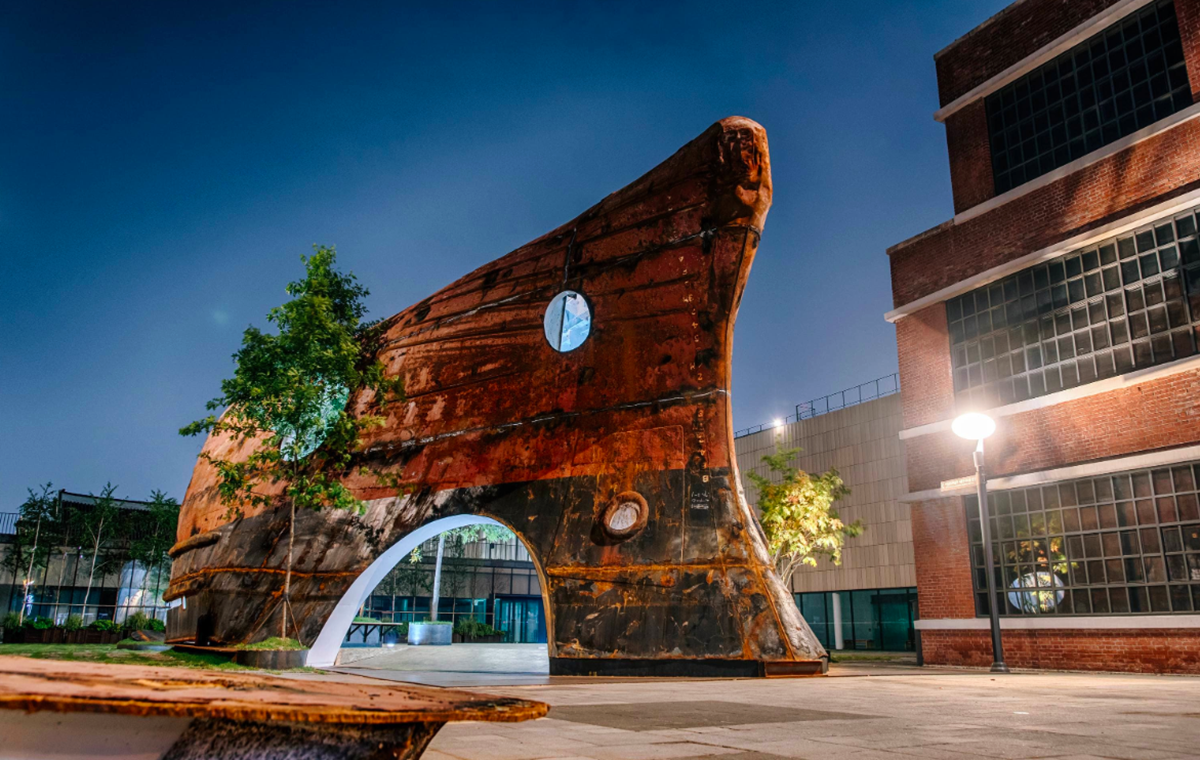
This giant sculptural pavilion, located at the entrance of the National Museum of Modern and Contemporary Art's (MMCA) courtyard in Seoul, was made of recycled steel parts of an old ship, highlighting recycling purpose to provoke that 'reusing materials' can still be a part of beauty of our time. The pavilion can be visited until October 3, 2016.
Designed by France and Korean based architecture firm Shinslab, Temp’L creates an architectural section of the project is drawn through the process of cutting up the old ship. The Temp’L Pavilion produces an emotional discourse between old and new by attributing new meaning and value through utilitarian process.
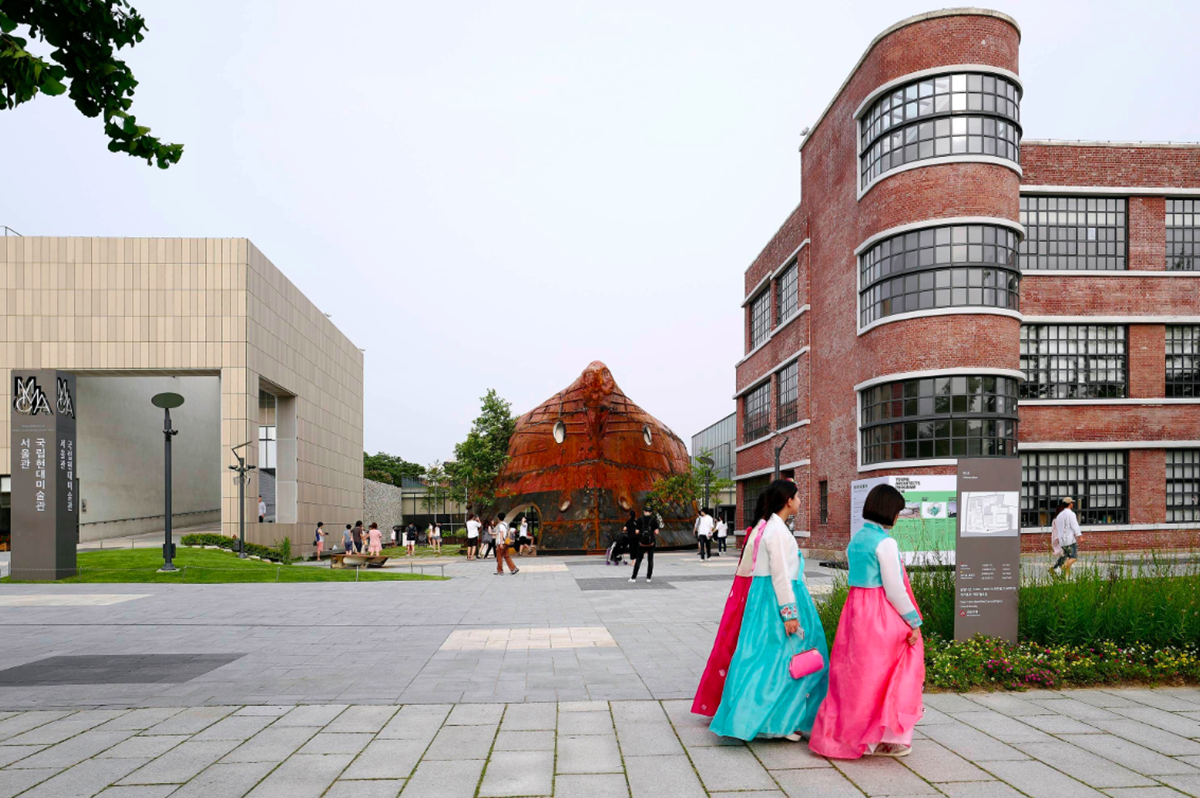
Image © Kim Yong-Gwan
''In ancient Greece, architecture was considered one of the highest forms of art. This is arguably no longer the case. A first approach for us in responding to the “Young Architects Program” was to consider that our thoughts will find an echo in Contemporary Art,'' said the architects.
The section-cut has the necessary force for the sawing action, while opening and thus freeing the space contained in the volume of the ship. This upside down massive metal structure situated at the entrance of the museum's courtyard, encourages curiosity and becomes an invitation to visit the project. The front surface curve of the ship may lead people to the museum, as it opens towards its main entrance.
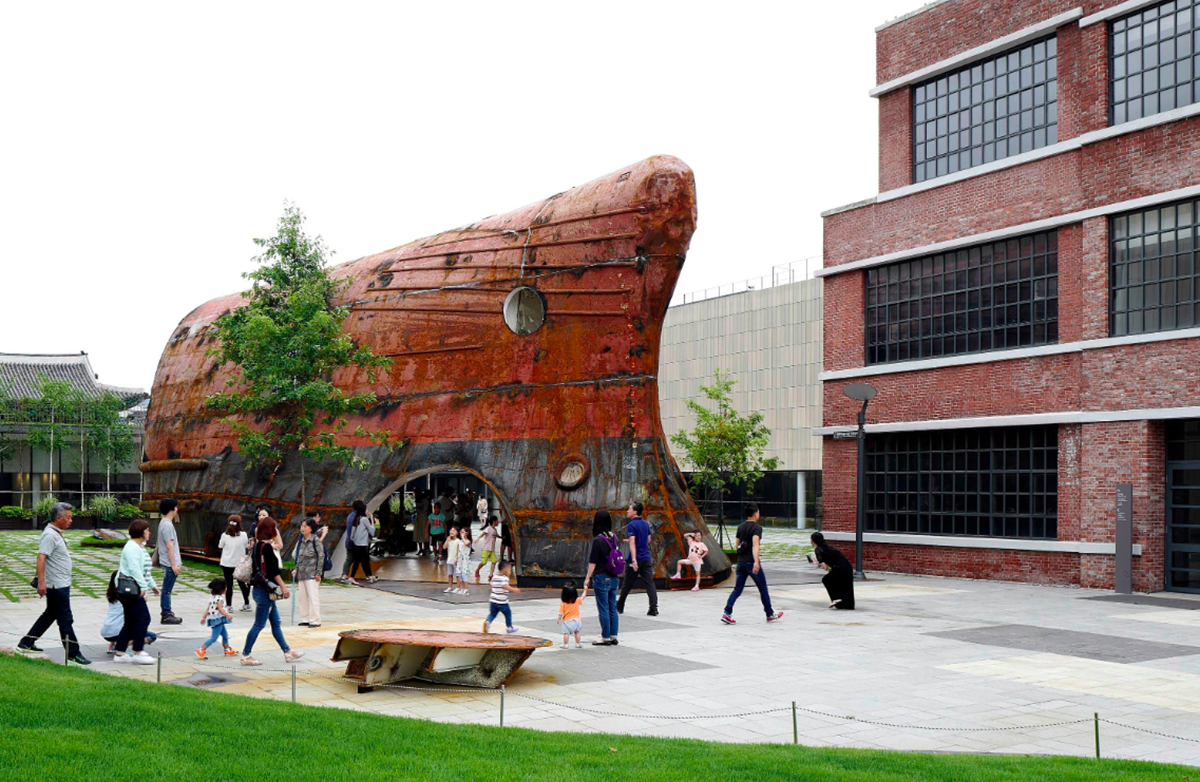
Image © Kim Yong-Gwan
The pavilion welcomes the visitor by showing its industrial face, made of a rusty and rough surface that is showing the origin of the material, the ship. On the other hand, the inside space is designed as an open area connected to a larger volume, where we find a resting place surrounded by vegetation.
The ship is hollowed out by connected spheres that set up a minimum structural reinforcement in order to maintain its shape.
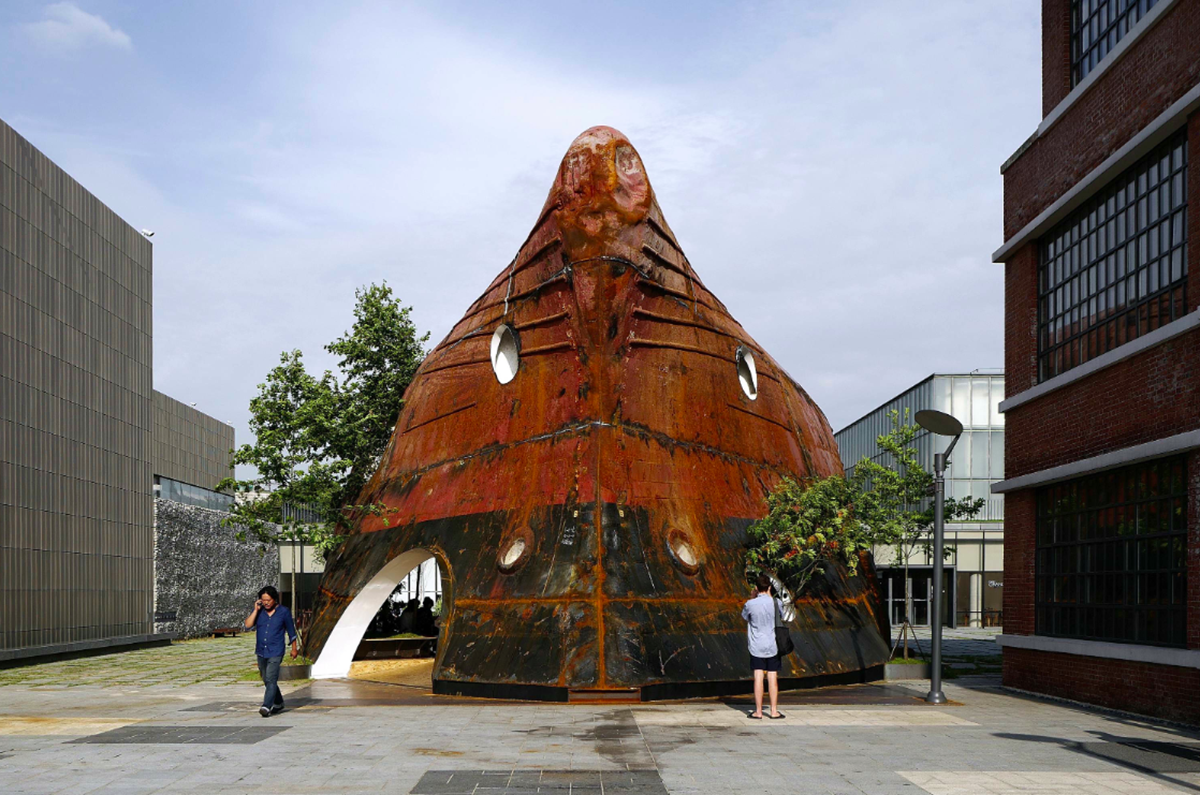
Image © Kim Yong-Gwan
''The Ancient Greek word "oikos" meant "house" and is the etymology of "Eco-", which is at the origin of words like “ecology” and “economy”. They are important factors for the contemporary practice of architecture which has to consider both the environment and the cost of building,'' said the architects.
''Any great cultural vestiges can lose their function. In the same way, a material can also lose its original value over time. The fact that the destiny of cultural relics is to be dismantled, should make us reflect upon what we need to consider for future generations,'' the architects added.

Image © Shinslab
The Temp’L has almost the same scale as the buildings surrounding it: as such, it is not just a simple object. It is introduced alongside the monumental buildings of the Office of the Royal Genealogy Hanok that are built in the Korean traditional style of architecture.
Through this Temp’L (temporary temple), the Pavilion will not only develop a new method of construction in architecture by recycling materials, but for those who will see to create emotion.
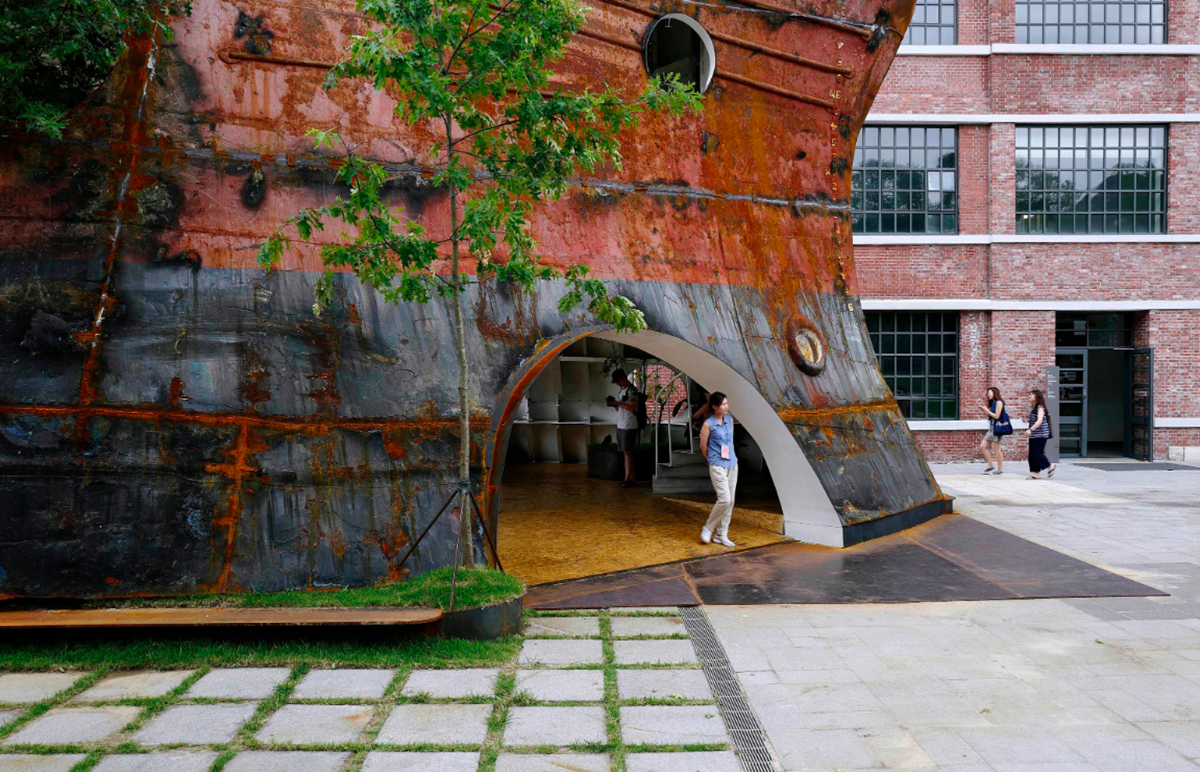
Image © Kim Yong-Gwan
Shinslab is a France architecture license agency working between France and Korea. The Human Body in Space is the principal theme of the research in different domains such as art, fashion design, architecture and urban design. Shin Hyung-Chul Tchely mainly for Korean Projects and Shin Claire for French part are associated in the practice.
Shin Hyung-Chul Tchely teaches in Paris La Villette (ENSAPLV) as instructor in urban design department and in Grenoble architecture school (ENSAG) as Professor in design department.
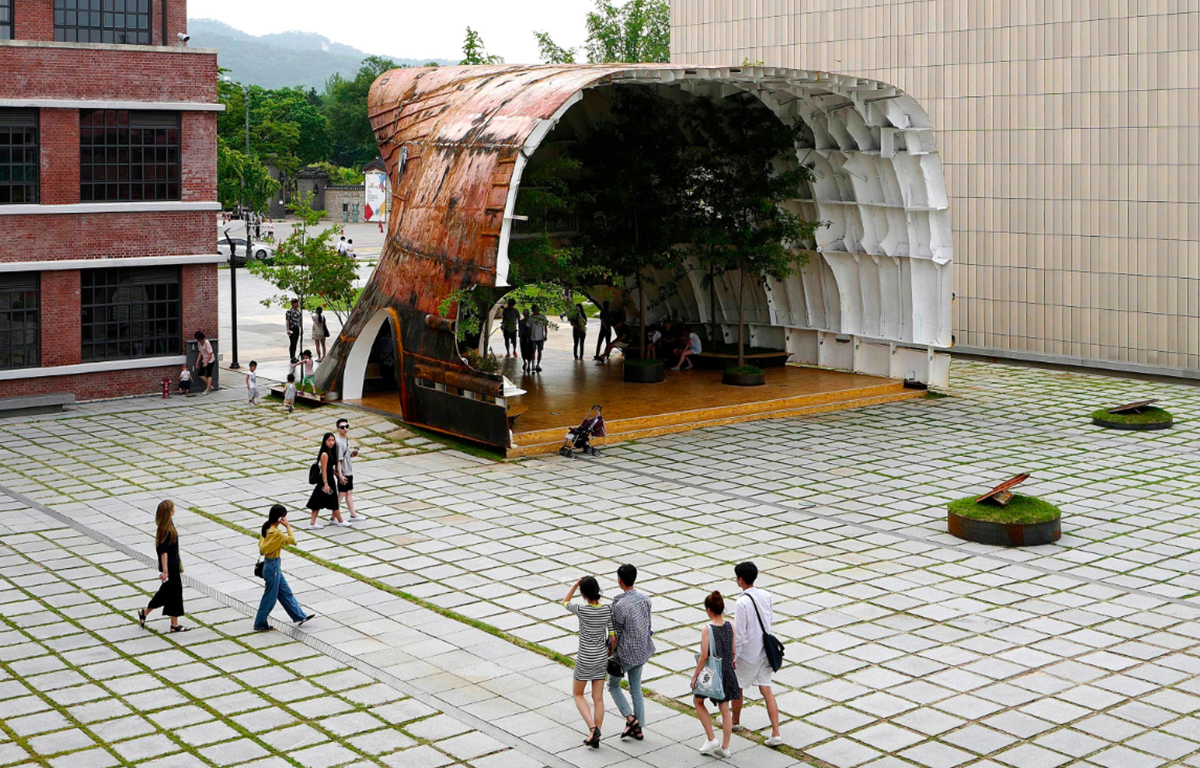
Image © Kim Yong-Gwan
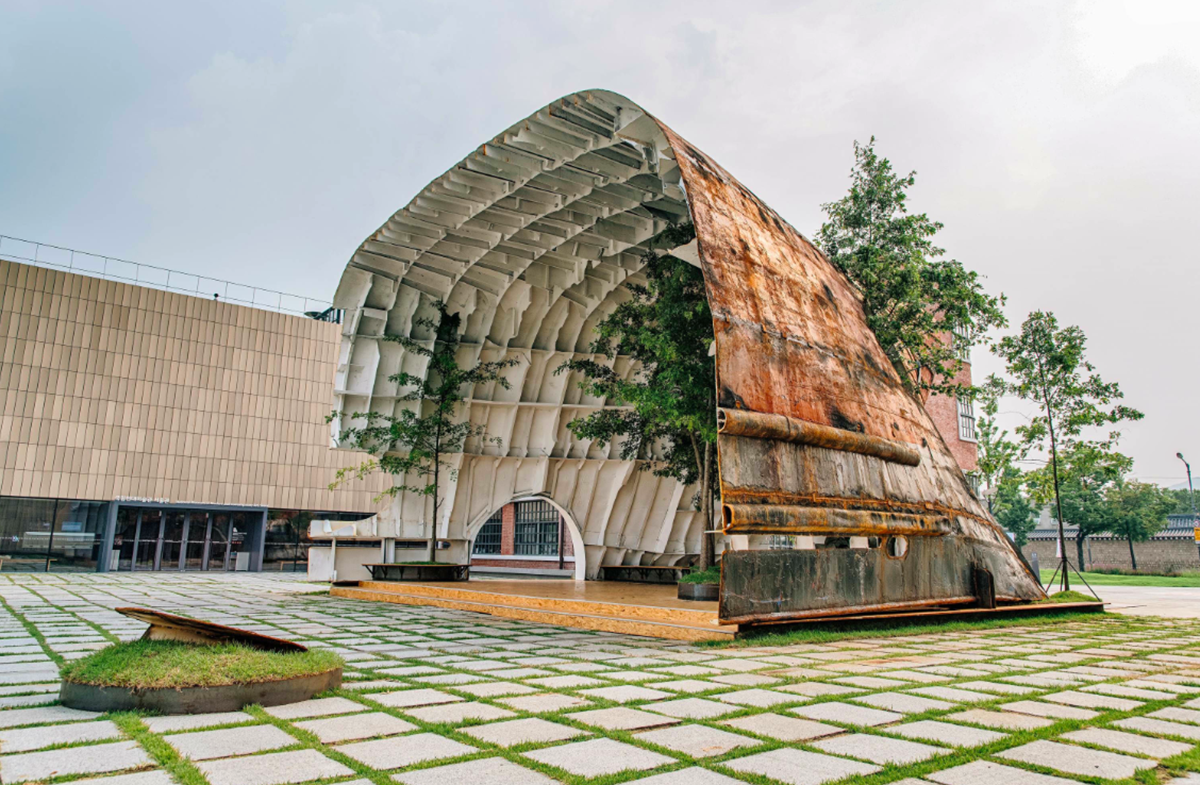
Image © Sugar Salt Pepper

Image © Kim Yong-Gwan

Image © Shinslab
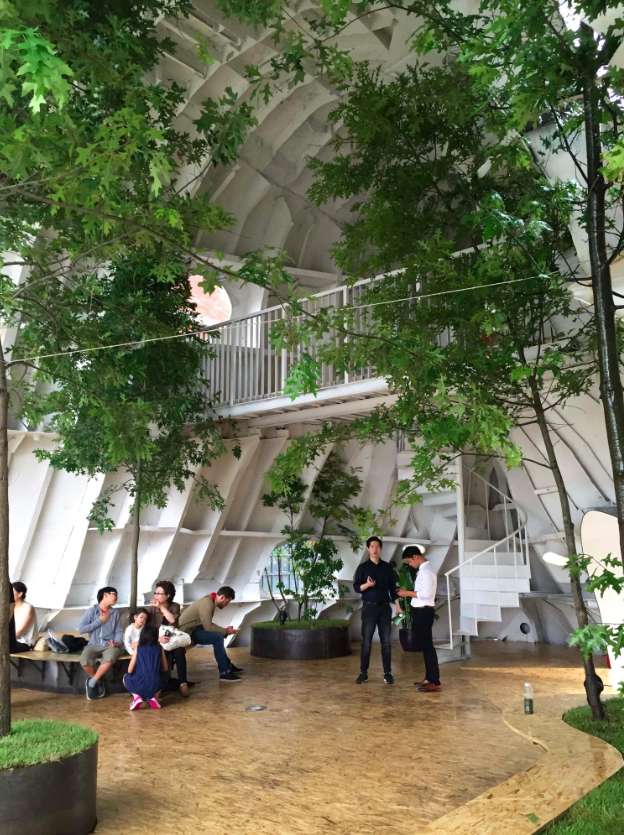
Image © Shinslab
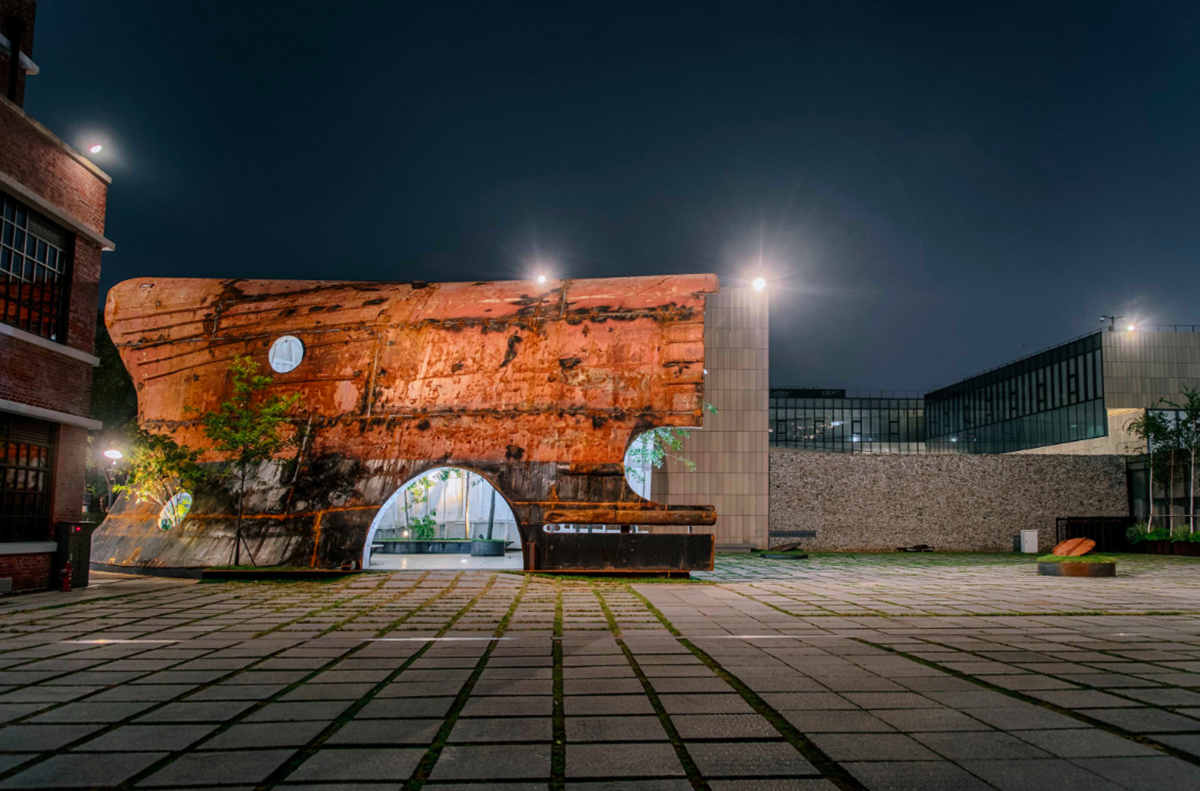
Image © Sugar Salt Pepper
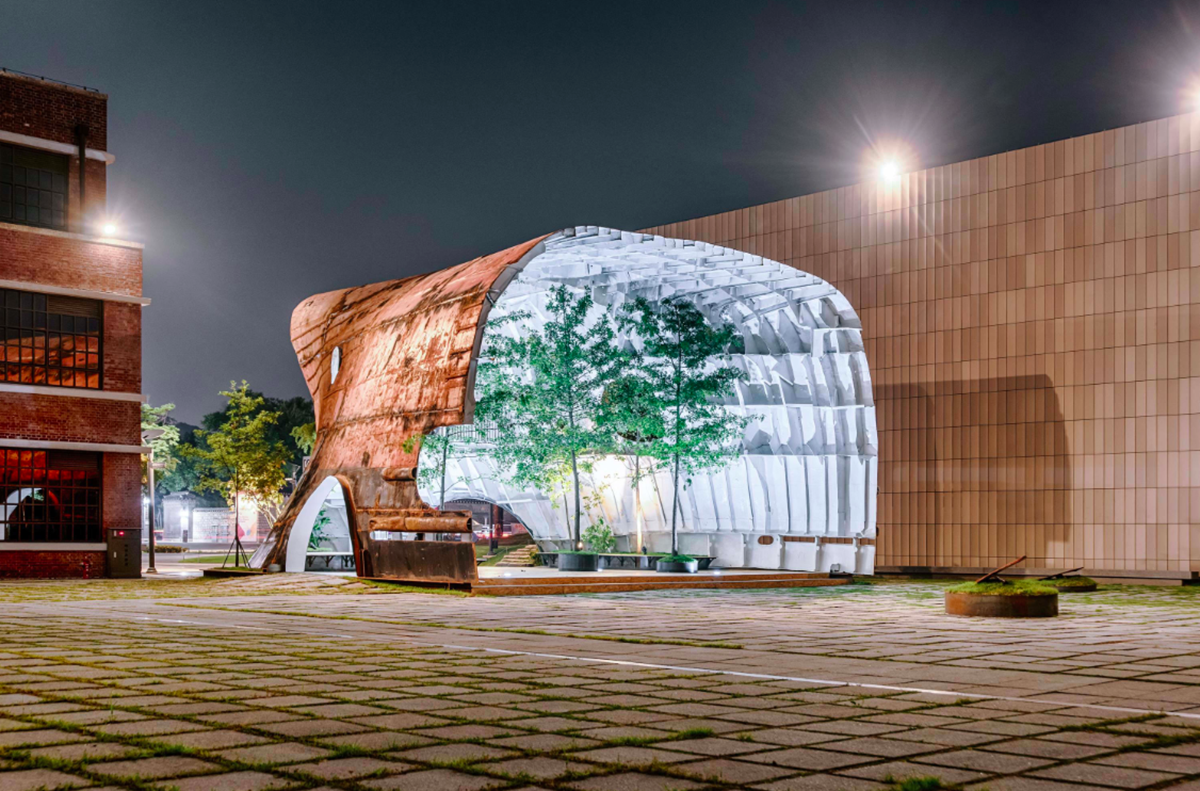
Image © Sugar Salt Pepper
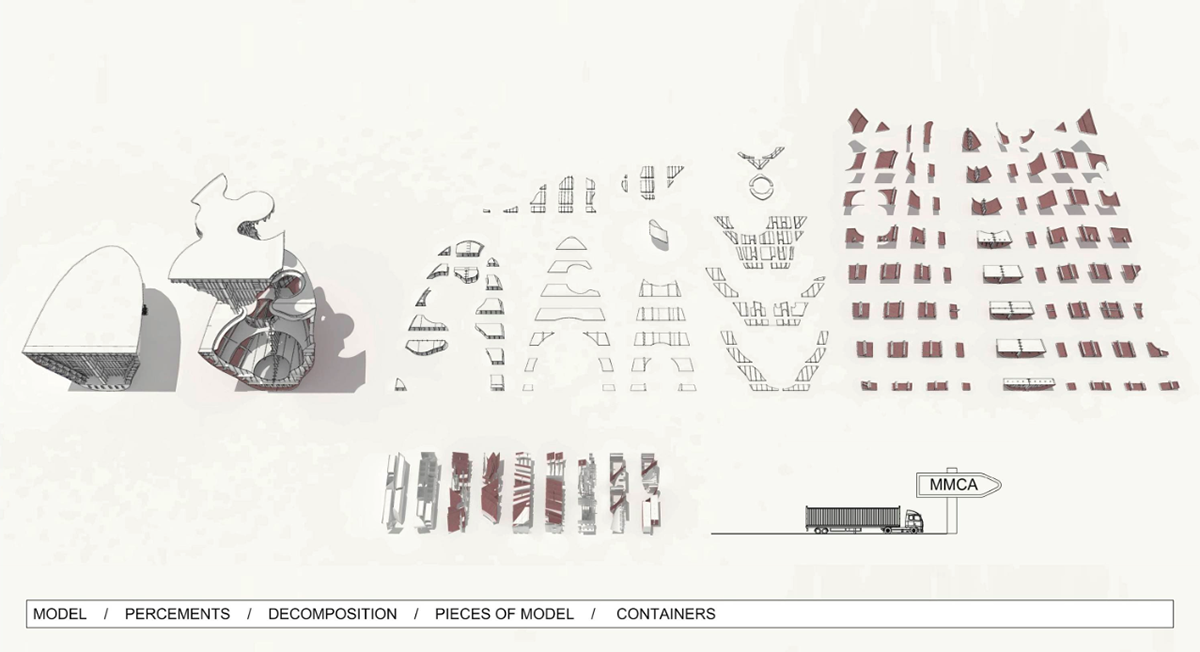
Image © Shinslab

Image © Shinslab
Top image © Sugar Salt Pepper
> via Shinslab
